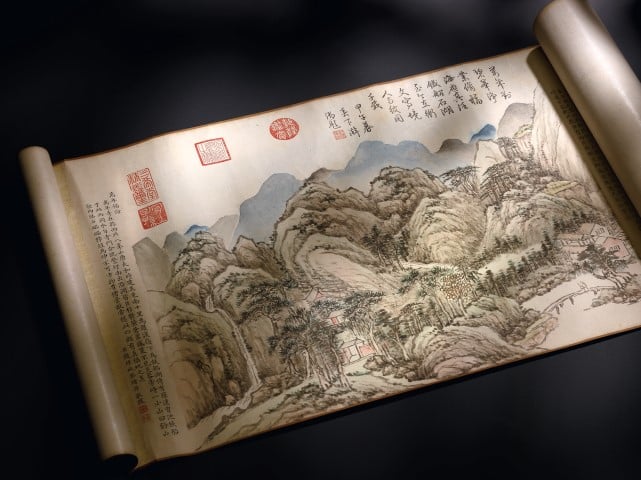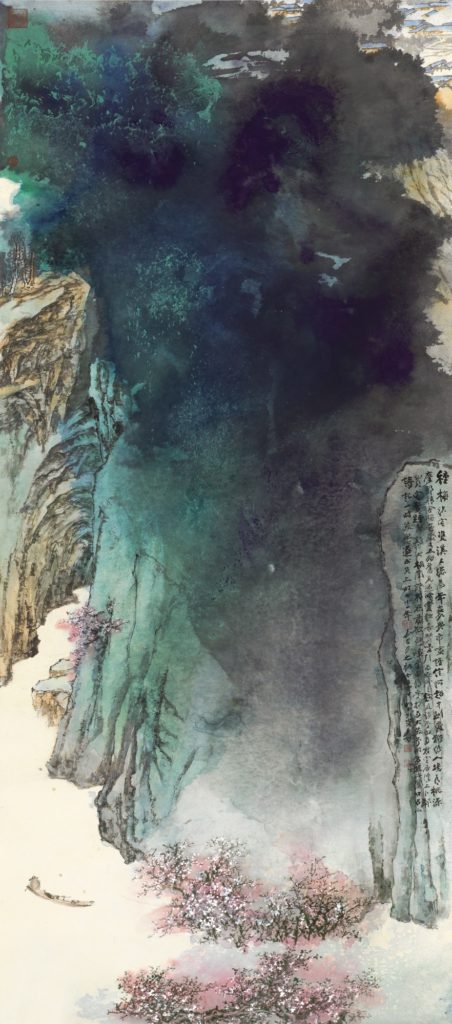Art World
Wowed by the Auction Battle for ‘Salvator Mundi’? Hong Kong’s Epic Bidding Wars Put That to Shame
A bidding war at Sotheby's Hong Kong this week lasted about as long as a network TV drama.

A bidding war at Sotheby's Hong Kong this week lasted about as long as a network TV drama.

Tim Schneider

Just shy of five months ago at Christie’s New York, Leonardo da Vinci’s Salvator Mundi stormed into the art market pantheon at a premium-inclusive price of $450.3 million. The 19-minute showdown between two then-mysterious phone bidders added considerable mystique to the sale’s still-expanding (if somewhat questionable) mythology.
But it turns out that anyone crazy enough to desire even more prolonged clashes of auction paddles should look east—specifically, to Sotheby’s Hong Kong, which has now hosted two bidding wars in three years that were more than double the length of the Salvator Mundi marathon.
The more recent of these capitalist endurance tests took place on Tuesday, in a special single-lot sale titled “A Rediscovered Imperial Heirloom.” The featured work was Ten Auspicious Landscapes of Taishan, a handscroll billed as “the greatest masterpiece” of 18th-century court painter Qian Weicheng. The artist rendered 10 vistas of Mount Tiantai in Zhejiang province, where he traveled with the Qianlong Emperor on a mission to inspect the territory. The scroll also doubles as a collaboration between the two men. Each of Qian’s ink-and-color illustrations is paired with a poem by the emperor himself.
Once housed inside the Forbidden City, Ten Auspicious Landscapes had never appeared at auction before this week. Its royal pedigree, combined with Qian’s virtuosity, drove collectors into a heated battle of bank balances—one that drew more than 100 bids and lasted a staggering 40 minutes. When the hammer finally fell, the work’s final price came in at $18.7 million (including the buyer’s premium), more than double its roughly $8.9 million high estimate.

Zhang Daqian’s Peach Blossom Spring (1982) sold at Sotheby’s Hong Kong for $34.9 million. Courtesy Sotheby’s.
Yet even the winner of this prolonged competition falls short of the ironman award at Sotheby’s Hong Kong. In April 2016, the house offered Zhang Daqian’s hanging scroll Peach Blossom Spring (1982) at a high estimate of $8.3 million. The ink-and-color landscape had not been seen at auction in nearly 20 years. It also boasted a rich exhibition history in both Asia and the US, with appearances at Taipei’s National Museum of History, the Smithsonian Institution in Washington, DC, and the Solomon R. Guggenheim Museum in New York.
The work inspired a nearly unprecedented frenzy at the house’s Hong Kong foothold—at least as measured by the clock. Like Ten Auspicious Landscapes, Zhang’s lusted-after landscape eventually inspired more than 100 individual bids. The buyer, the Long Museum in Shanghai, only vanquished its commercial rivals after the competition stretched to 50 minutes.
The result? A premium-inclusive price of $34.7 million, according to Sotheby’s. That’s more than four times the high estimate, and a new world auction record for Zhang that still stands today, according to the artnet Price Database.
Although these two Hong Kong bidding wars were remarkable in their duration, they speak to Asian buyers’ ample wealth and growing passion for art. (It should be noted, however, that this passion doesn’t always translate to cold, hard cash. Non-payment remains a major problem in mainland China. According to a study released last year by artnet and China Association of Auctioneers, only 51 percent of buyers actually paid for the work they purchased in 2016.)
This spring’s slate of auctions at Sotheby’s Hong Kong, which ended on April 2, generated a grand total of $466.5 million in sales across all categories, including fine art, decorative art, wine, jewelry, and more. Backed by a solid 89 percent sell-through rate, that figure fell toward the high end of the $353–495 million pre-sale estimate. It also qualified as the house’s best performance in Hong Kong other than autumn 2013, when its 40th-anniversary sales brought in $525 million. If current trends continue, however, that record’s days may be numbered.